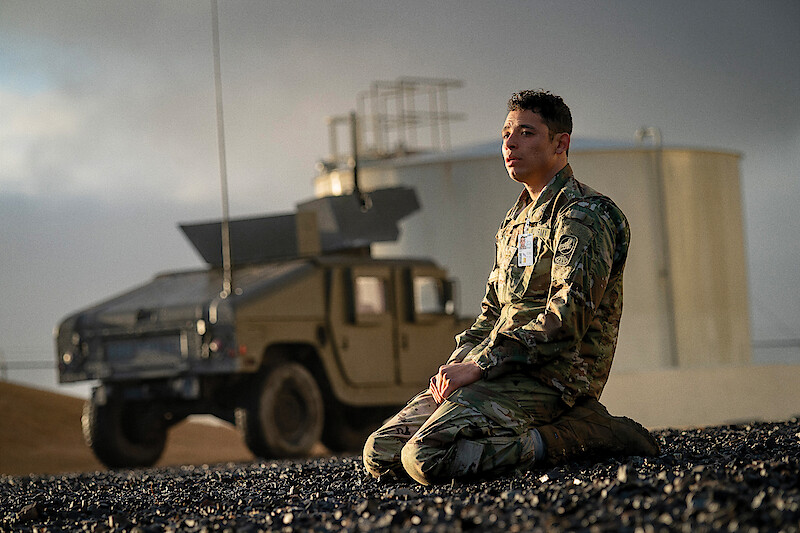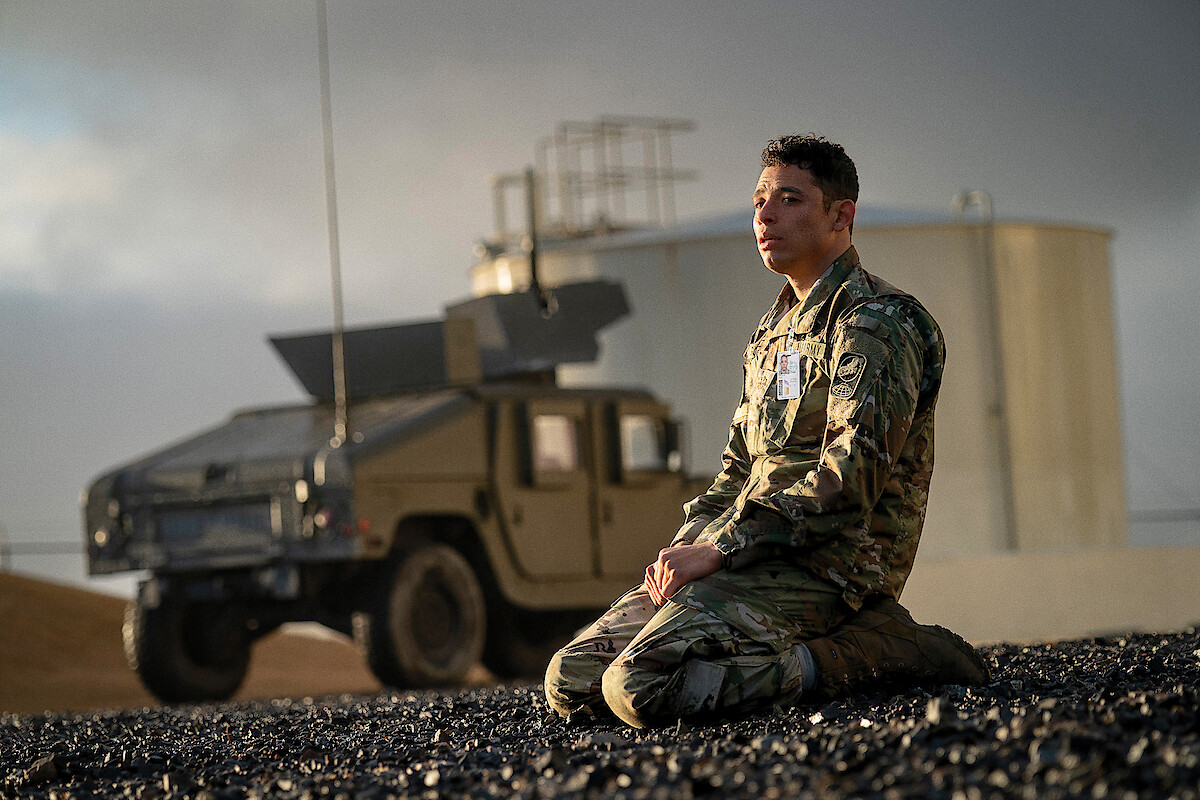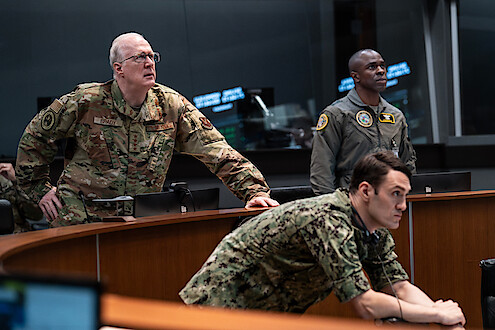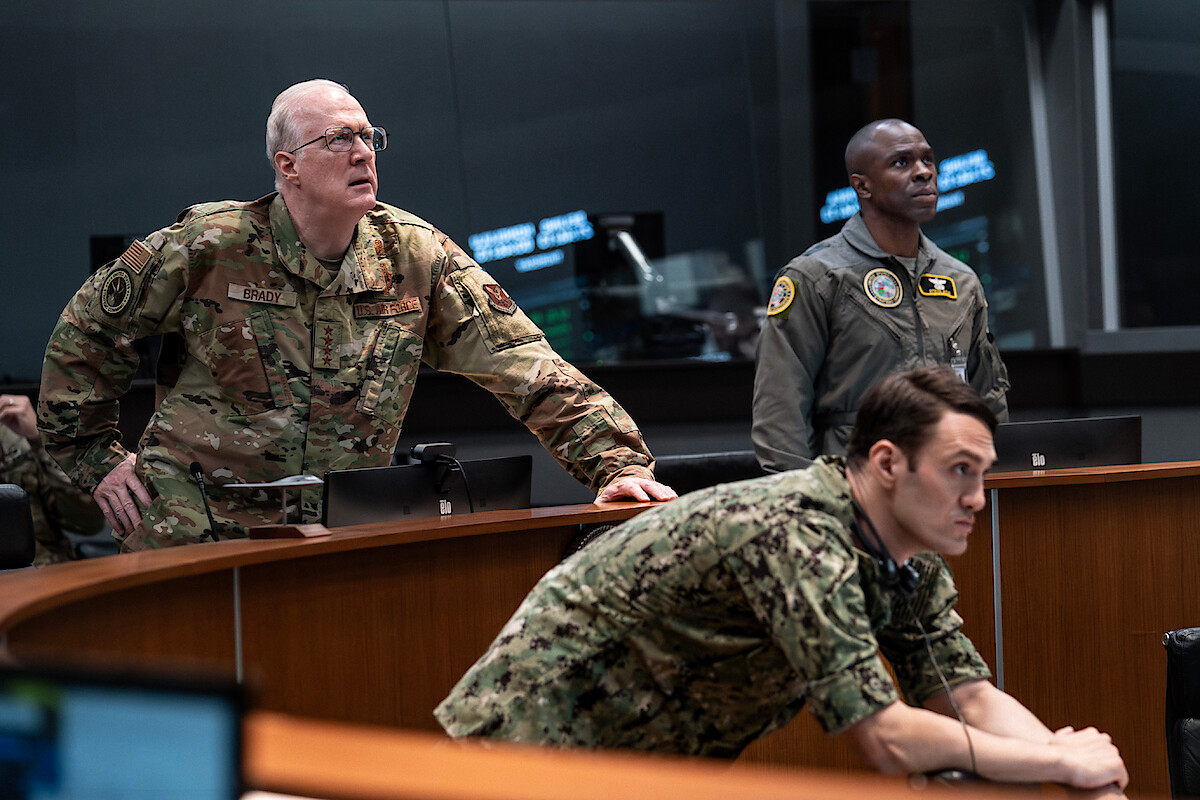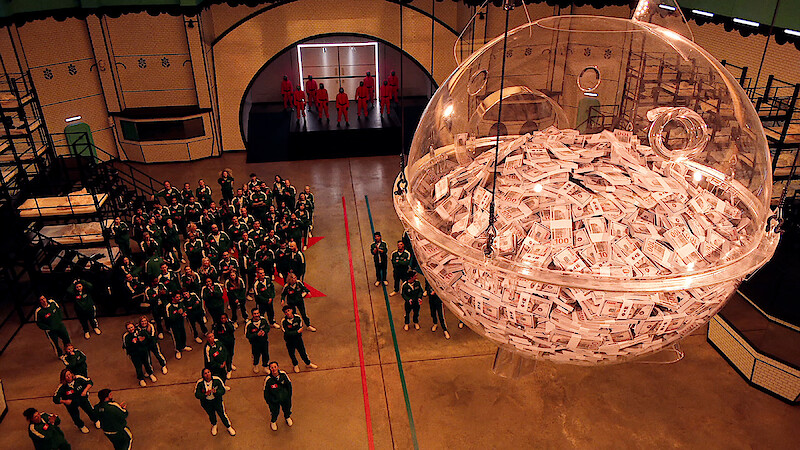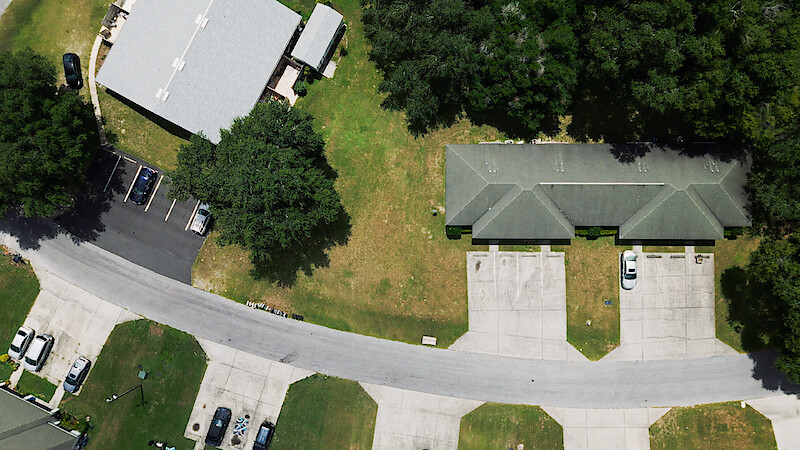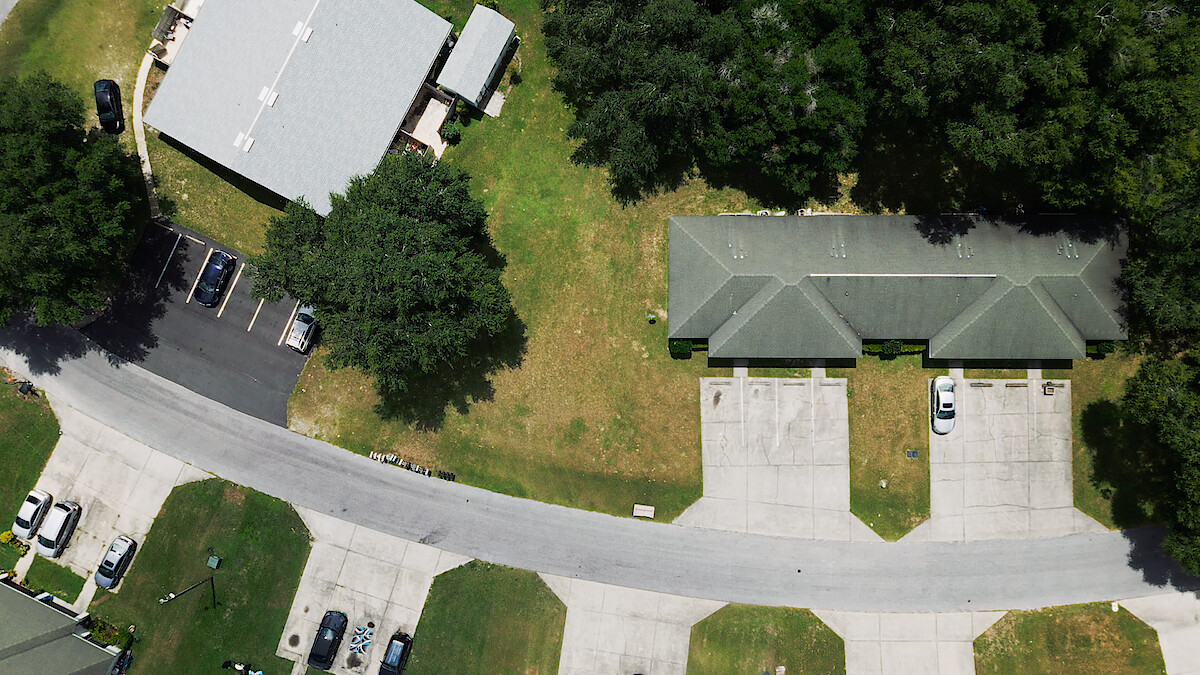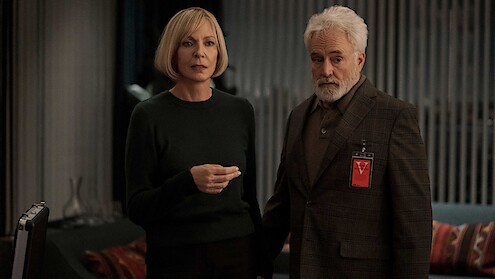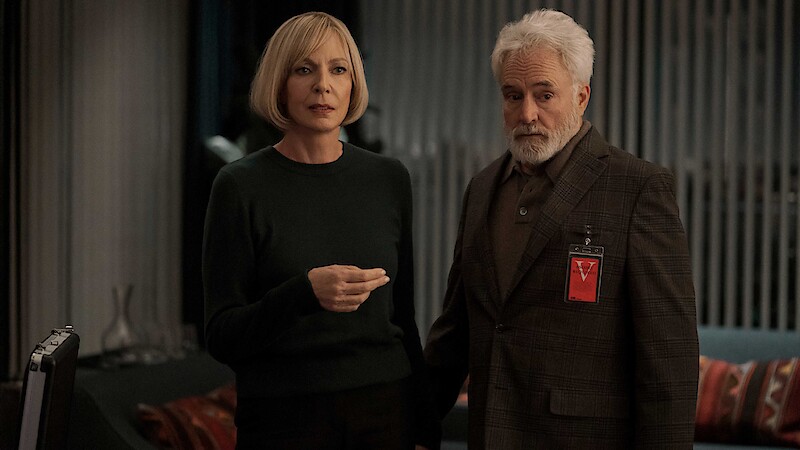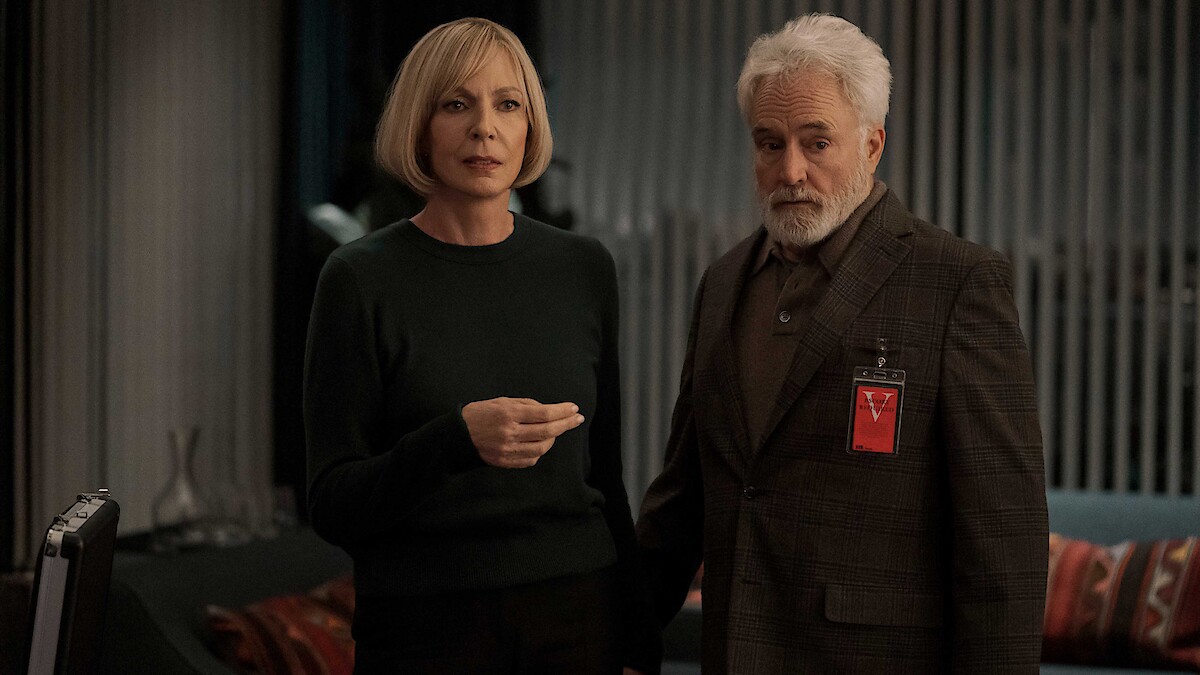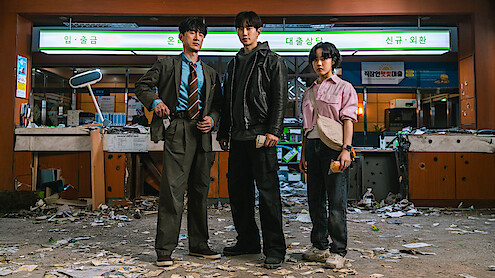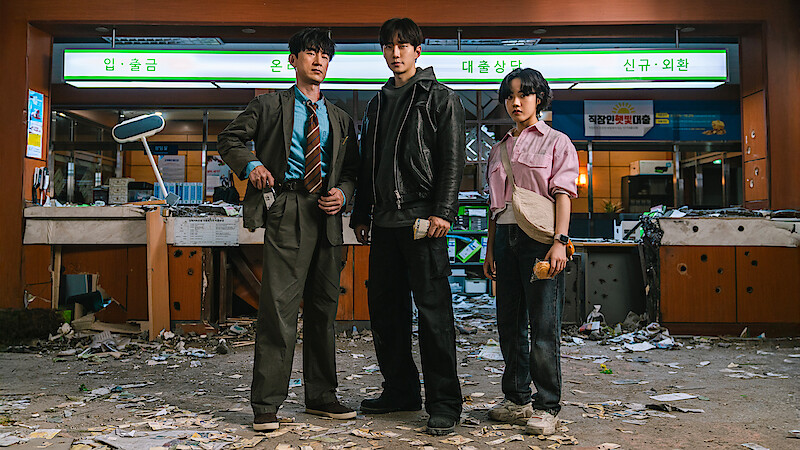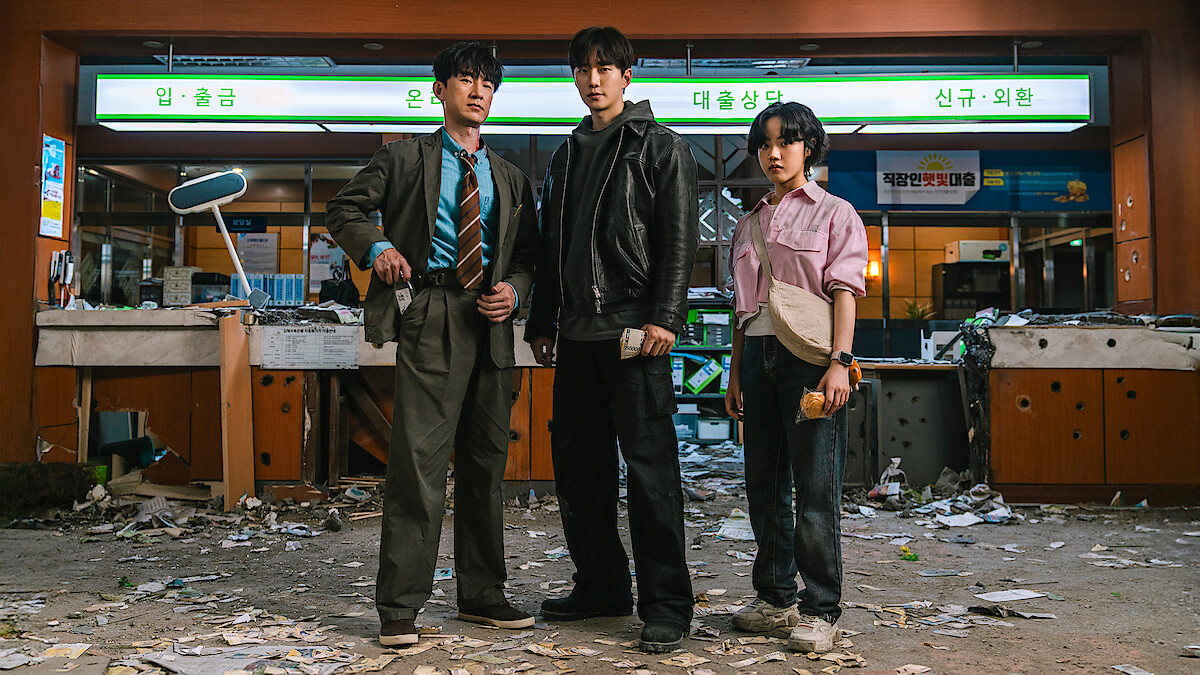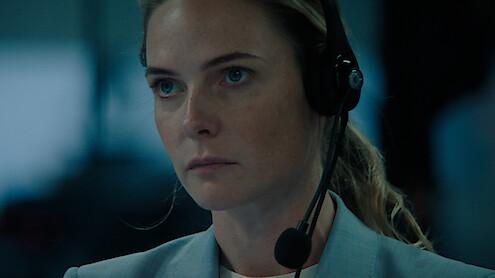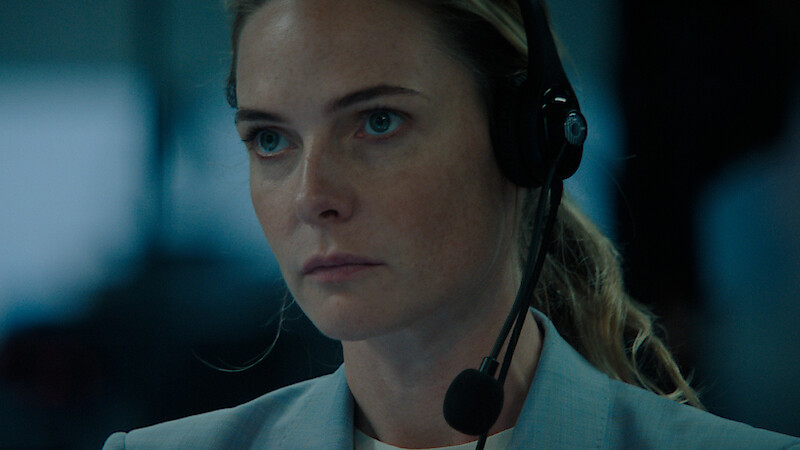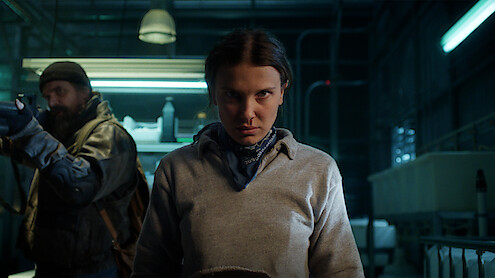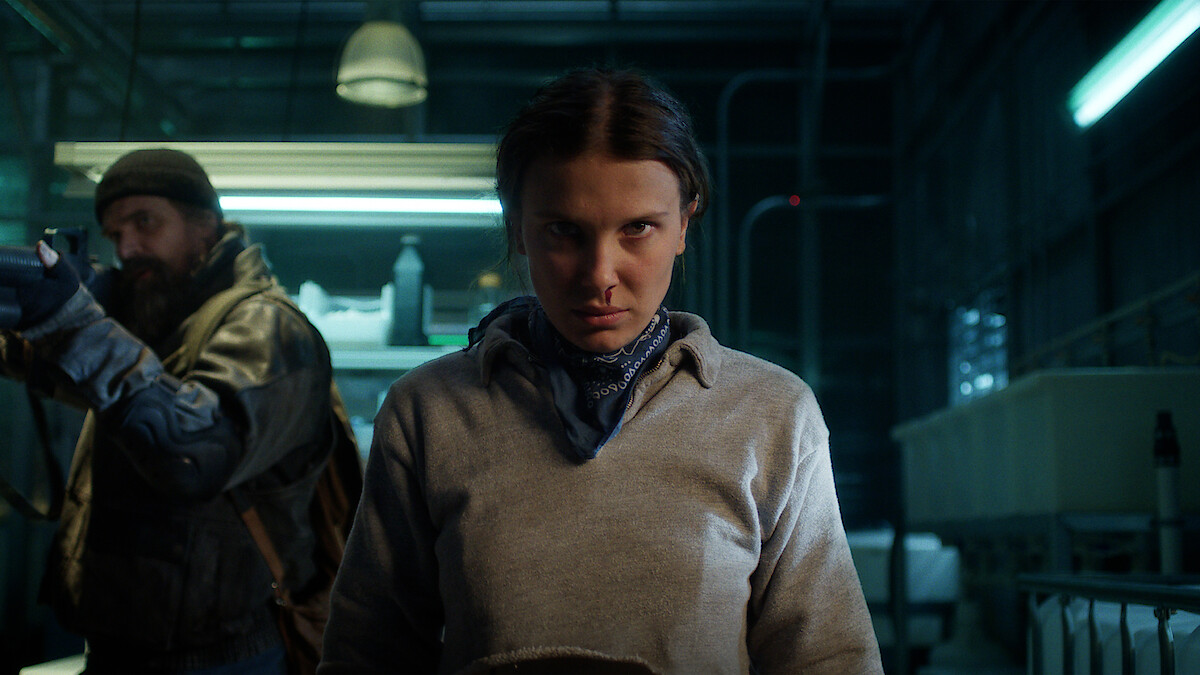


Kathryn Bigelow’s A HOUSE OF DYNAMITE builds to a single shattering climax — one we see from three different perspectives throughout the story.
That’s the structure of the latest film from Academy Award winner Kathryn Bigelow (The Hurt Locker, Zero Dark Thirty). In its three segments, A HOUSE OF DYNAMITE repeatedly tracks the 18 minutes that follow a missile being launched at the United States — first from the perspective of the White House Situation Room, then from the perspective of United States Strategic Command, and finally from the perspective of the President himself.
“Eighteen minutes to decide the fate of the world and yet limited information [with] which to do so,” Bigelow tells Netflix. “We see into the halls of power, where highly competent individuals are confronted with confusion, chaos, and helplessness.”
While A HOUSE OF DYNAMITE is a story about political actors, it’s not only a political story — it’s a thriller where every small action has global consequences. “The film is a portrait of people at the highest level of government being called on to make impossible decisions in the most extreme circumstances imaginable,” Bigelow says. “When there’s just 18 minutes to react, a lot of these political talking points tend to fall away pretty quickly.”
“One of the big things that we wanted to showcase in making this film is how little time there would be for the United States government, or any government really, to respond to a nuclear attack,” screenwriter and producer Noah Oppenheim (Zero Day, Jackie), who conducted an extraordinary amount of research into this topic, tells Netflix. “During that same 18 minutes, we wanted to show what was happening throughout the entire apparatus of the government.”
The three chapters that make up A HOUSE OF DYNAMITE all end in the same place — but as the film continues, we see the same conversations from different angles, offering a deeper understanding of those nerve-wracking 18 minutes.
Read on to dive behind the scenes of A HOUSE OF DYNAMITE’s three endings — and what comes next.
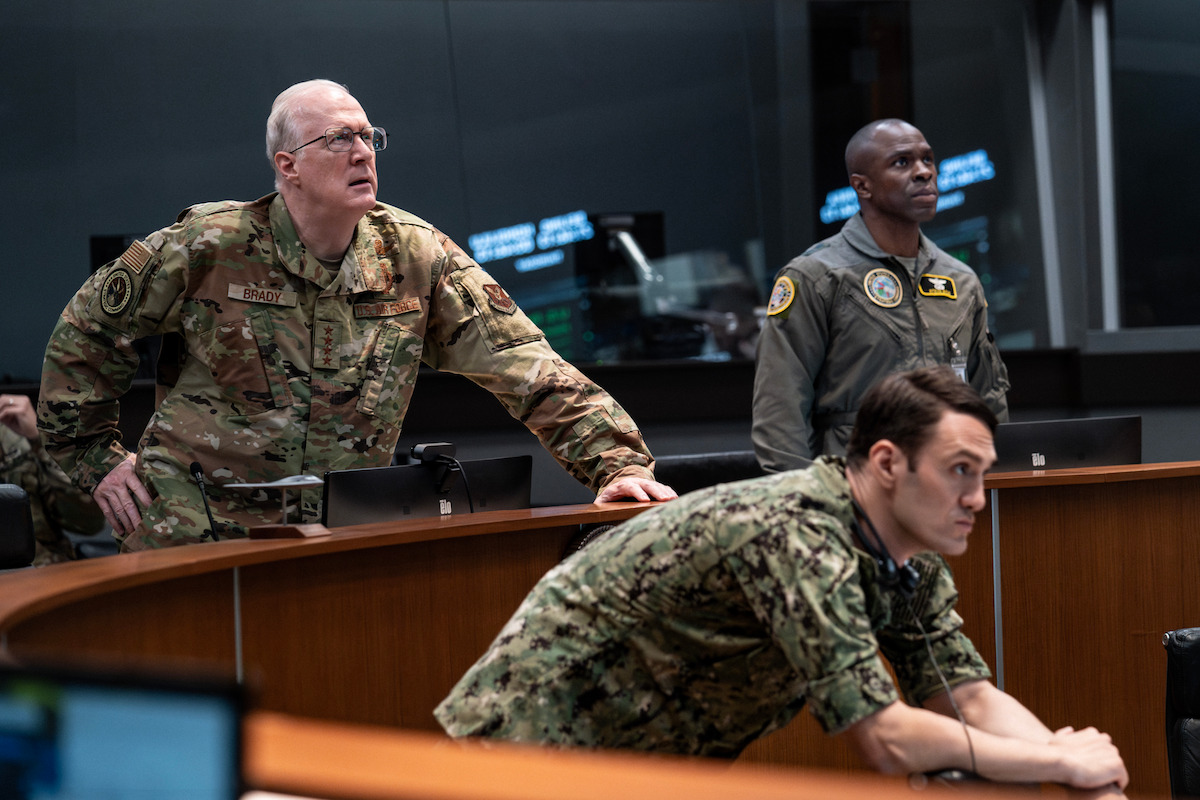
The first act of the film, titled “INCLINATION IS FLATTENING,” begins with a typical morning routine for its characters. Captain Olivia Walker (Rebecca Ferguson) says goodbye to her family and heads to work in the White House Situation Room. Major Daniel Gonzalez (Anthony Ramos) ends a heated conversation with his wife and heads into the 49th Missile Defense Battalion. But their routine is shattered when an unattributed ICBM (intercontinental ballistic missile) is launched. Initially, it seems to be a test, but when the missile’s inclination flattens, it’s clear it’s headed for the continental United States.
Who exactly launched the missile, whether it’s a country, a terrorist group, or (as one character suggests) a disgruntled submarine captain, is intentionally not revealed by Bigelow and Oppenheim. Both wanted the villain of the film to be nuclear proliferation itself. “The antagonist is the system we’ve built to essentially end the world on a hair-trigger,” says Bigelow.
Quickly, the full might of the military industrial complex leaps into action. The 49th Battalion fires two GBIs (Ground-Based Interceptors) at the missile. STRATCOM (United States Strategic Command) convenes with Secretary of Defense Reid Baker (Jarred Harris) via video conferencing to determine next steps. These scenes served as a challenge for the film’s star-studded ensemble cast, and a reminder that even professionals at a high-stakes moment like this can struggle with technology.
Deputy National Security Advisor Jake Baerington (Gabriel Basso) must substitute for his boss and FaceTimes in while running towards the White House; North Korean NSA expert Ana Park (Greta Lee) takes a call from the Presidential Emergency Operations Center while attending a Battle of Gettysburg reenactment with her son. “It’s impossible to stop your personal life from interfering with the job that you have to do,” Harris tells Tudum. “Things like that, someone having their colonoscopy, it’s their day off, and they’re with their kids at the reenactment. You’re at the mercy of the strength of your signal.”
The actors often filmed scenes on video calls, with scene partners in separate rooms. “They're live, watching a screen, talking to each other, interacting, Situation Room, Greely, STRATCOM, and all these multiple sets, people sitting there for weeks,” production designer Jeremy Hindle tells Netflix. “They always have to be attentive, so it couldn't be put in later.”
And, as in real life, it was a challenge. “There was a big ensemble of actors and they didn't even meet each other often,” cinematographer Barry Ackroyd tells Netflix. “And others were playing parts in the studio off-camera so that it could keep the authenticity flowing. And then we would finally get round to shooting their piece and someone else's piece and someone else.”
“We’re not as good in two dimensions as we are in three,” Tracy Letts, who plays STRATCOM’s General Anthony Brady, tells Tudum. “I think there's actual value in showing that so many of those governmental functions, that’s just the way they occur. That’s the way that would happen. It would happen in Zoom calls and closed circuit end phone calls, etc. It would all be played out over that technology.”

There are moments of levity scattered throughout the tension of A HOUSE OF DYNAMITE; before the missile launch, Tracy Letts’ General Brady gets the opportunity to riff about last night’s baseball game, dialogue that Letts and Bigelow worked through together on set. But between these moments of humanity, the film’s tragedy strikes early.
When Gonzalez’s battalion fires a GBI at the missile, the team feels fully capable of handling the situation. In the first section, the White House Situation Room, including Walker and Admiral Mark Miller (Jason Clarke), is shaken but remains confident that the GBIs will successfully stop the missile. “It’s just unfathomable that it could be real,” Clarke tells Tudum. “We always think the good guys win.”
Not in this story. In the second act of the film, titled “HITTING A BULLET WITH A BULLET,” we learn from Baerington that that’s exactly how difficult a GBI strike is — its efficacy in tests is barely north of 50%. The first GBI fails to detach properly and falls back to earth; the second reaches the missile but fails to connect. This devastating moment leaves the officers of the 49th Battalion totally shattered. As his colleagues call their families, Gonzalez stumbles outside and falls to the icy Alaskan ground, retching.
Bigelow, Ramos, and the production had only four hours to get this shot as the sun set, which lent itself to the scene’s atmosphere of pure desperation. “Just arriving and then them being like, ‘We’re running out of light. Please hurry up and get in your costume and let’s shoot this,’ kind of just gave me this sense,” Ramos tells Tudum. “That guy realizes in that moment the gravity of what is about to happen. This is really gonna happen, and there's nothing I can do about it.”
Secretary of Defense Baker’s attention is fraying. The secretary is still recovering from the passing of his wife, and when it becomes clear that Chicago is the most likely target of the incoming missile, he comes undone; his daughter (Kaitlyn Dever) lives in Chicago. If the bomb hits, she could be one of the 10 million who will die on impact — or the additional 10 million who will perish from the fallout.
Baker’s attention is quickly diverted to trying to figure out a way to get his child out of the city. If it comes at the cost of his job performance, it’s difficult to blame him. “That’s a big ask, isn’t it?” Harris says. “If somebody realized that a loved one was in the firing line, it's almost impossible to expect them to not try and get them out of it.”
That motivation rhymes with Captain Walker’s dilemma in the first act; with her son sick at home, she heads to work anyway. When the news of the missile comes through, she tells her husband to drive west as fast as possible. “We were shooting a scene with my husband where we read our son a book in bed, and we did one take where I asked him to give me the dinosaur before going to work,” Ferguson tells Netflix. “At a very critical moment in the film I put my hand in my pocket, and I found that dinosaur, and I just put it in front of me and Kathryn shot my reaction. It’s the one moment in the film where we see the emotional toll the situation is taking on my character.”
At the end of the third act, titled “A HOUSE FILLED WITH DYNAMITE,” Baker finally gets through to his own child, and has a final, bittersweet conversation with her. She’s met a boy; she needs some space; he says goodbye. Unlike many of the phone conversations in the film, Harris and Dever were able to act opposite one another directly. “We did her side first, and I was there on her location when she did her side of it,” Harris says.
Baker heads to a rooftop landing pad to get on a helicopter that will bring him to Raven Rock, a self-sufficient nuclear bunker in Pennsylvania — but instead of boarding the chopper, the secretary walks off the edge of the roof. The chaotic sound of the chopper and screams of his aides are heard earlier in the film over the phone, but only in the third chapter do we understand exactly what was happening at that moment.
With the knowledge of what’s coming, Baker finds himself with nothing left to live for. “He’s barely recovering from the loss of his wife,” Harris says. “He doesn’t want to live in a world where neither she nor his daughter’s alive.”

In the third chapter of A HOUSE OF DYNAMITE, we finally meet the President of the United States (Idris Elba), who until this point has been only a voice on a phone.
Sound designer Paul Ottosson even intentionally obscured Elba’s dialogue in the first two acts. “Just like the characters in the movie, I think they have an immense amount of information coming in from everybody,” Ottosson tells Netflix. “And you need to sort out what's important. I don't know if it's humanly possible to pick out everything.”
That’s the challenge facing Elba’s character. “For POTUS, it’s a normal day,” Elba tells Netflix. “His shoes are a little tight. His wife is traveling in Kenya. The first thing on the schedule is to go meet these school kids playing basketball at an arena.”
Bigelow kept the extras in the basketball scene in the dark as to the exact nature of their scene (which also features WNBA star Angel Reese as herself). “They just knew that someone was coming,” Elba says. “So, when they caught the crowd reaction going, ‘It’s POTUS! It’s the guy from The Wire!’ That was genuine. And it’s all real. That’s Kathryn.”
But the gathering quickly goes south when the Secret Service is alerted to the inbound missile. “The president is not going to be sitting at his desk at the Oval Office when this happens,” Oppenheim says. “He could be asleep, he could be in the bathroom. In the case of our film, he could be at an event at a basketball arena with a bunch of kids. And so not only does he have only three or four minutes to decide, but at the same time, he's probably being rushed in a hurry to evacuate. We wanted to kind of capture that in real time with all that intensity as well.”
The president is ushered to a secure location on Marine One, and nuclear football attendant Officer Reeves (Jonah Hauer-King) informs him of his responsibility: to decide exactly if and how the United States should respond to the attack.
The third act of A HOUSE OF DYNAMITE is tasked with tying together the threads of the first two chapters, which made it a gratifying challenge for editor Kirk Baxter. “All that stuff was dessert for me,” he tells Netflix. “To hear Idris as first just audio in the first act, and then by the second act you're now punching in on his little square as a black hole, and I'm holding those longer than they deserve to provoke that response of, where is this person? And then you finally get to enjoy him; you finally get to see him perform on screen all these things that we've heard earlier.”
Throughout, the president and his team try to find an excuse not to respond. Baerington and Miller communicate with their Russian counterparts, who insist that they aren’t the source of the launch. Baerington believes them — but he can’t prove his instinct is true. In the absence of facts, General Brady pushes the president to make a decision about the United States’ preemptive response.
“It really is game theory, right?” Letts says. “If you move your piece now, then you can perhaps subvert your opponent’s expectations. If you wait and see how your opponent’s offensive sally plays out, then you may be too late with your response.”
With that in mind, the President is handed the menu of responses, split into options ironically labeled “rare,” “medium,” and “well done” by Officer Reeves. It’s a morbid bit of humor that calls to mind a podcast the President listened to, one that lends the film and the chapter their titles. (The podcast in question is Sam Harris’ Making Sense). “I listened to this podcast, and the guy said, ‘It’s like we all built a house filled with dynamite,’ ” the president says. “Making all these bombs and all these plans, and the walls are just ready to blow. But we kept on living in it.”
This is the moment A HOUSE OF DYNAMITE ends with, three times — one man with the fate of the world laminated in his lap. The President takes a moment to try to call his wife (Renée Elise Goldsberry), and then loses the signal. He returns to the phone and reads his verification code. The missile reaches Chicago. We see scores of people heading for the Raven Rock bunker in Pennsylvania, then Ramos’ Gonzalez on the ground in Alaska one more time. The film cuts to credits.
For Bigelow, the film’s unresolved ending is an invitation. “I want audiences to leave theaters thinking, ‘OK, what do we do now?’ ” she says. “This is a global issue, and of course I hope against hope that maybe we reduce the nuclear stockpile someday. But in the meantime, we really are living in a house of dynamite. I felt it was so important to get that information out there, so we could start a conversation. That’s the explosion we’re interested in — the conversation people have about the film afterward.”
A HOUSE OF DYNAMITE is now streaming on Netflix.




